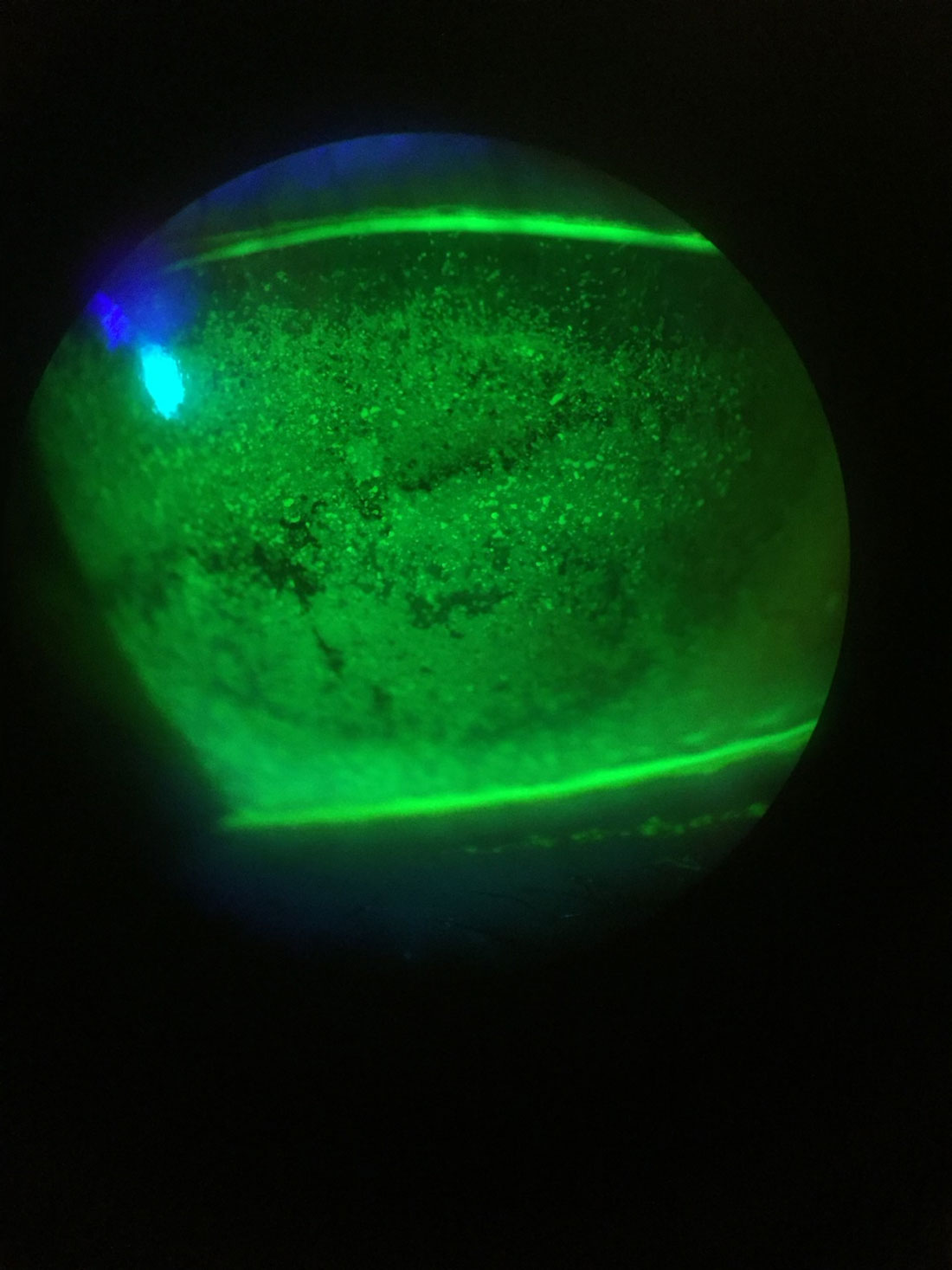 |
|
In the meta-analysis, vitamin D doses ranged from 1,000 to 2000 IU (oral) and 200,000 IU (intramuscular injection) once daily. Oral supplementation seemed to produce the greatest effects on dry eye symptoms compared with buccal spray and injection. Photo: Pam Theriot, OD. Click image to enlarge. |
Patients suffering from dry eye may find relief with vitamin D supplementation, according to a systematic review and meta-analysis published recently in Contact Lens and Anterior Eye. Researchers from China explained in their paper that vitamin D “deficiency exacerbates the ocular inflammatory response in patients with chronic DED, resulting in altered corneal epithelial contours, damage to Bowman’s layer, dendritic cell recruitment and altered subbasal plexiform features. The increase in corneal dendritic cell density and its potential effect on subbasal plexus features may be related to the severity of DED symptoms.” They added that deficient levels of this vitamin may also affect nerve fibers, resulting in worse symptoms of ocular pain or foreign body sensation.
The review included a total of eight studies with 439 cases. Studies were independently assessed for quality by two reviewers who also calculated standard mean difference (SMD)—a way of pooling data from different studies—for Schirmer’s test, tear film break-up time, corneal fluorescein staining scores, lid hyperemia, Ocular Surface Disease Index (OSDI) and Visual Analog Scale (VAS), the latter of which measures subjective pain symptoms. An SMD of 1.00 is used for untreated controls and values above or below indicate treatment effects.
Upon analysis, the researchers found that vitamin D supplementation significantly improved tear production by Schirmer testing (SMD 1.43 vs. controls) and tear film stability by tear break-up time (SMD 1.19) and reduced lid hyperemia SMD (-0.71), OSDI (SMD -1.10) and VAS (SMD -0.32).
“The findings have implications for potential clinical approaches to dry eye therapy and the direction of the patient lifestyle improvement,” the researchers concluded in their paper.
Chen Z, Zhang C, Jiang J, et al. The efficacy of vitamin D supplementation in dry eye disease: a systematic review and meta-analysis. Contact Lens and Anterior Eye 2024. [Epub ahead of print]. |


